Discover the Wild Leek (Ramps)
Learn how the influence of ramps has built relationships within
Learn how the influence of ramps has built relationships within
Completely Minimize the Odors…! After doing much of the same
Here is the latest presentation and virtual tour of how
Spring is here at Midwest Permaculture. It’s time for the
I’d like to invite you to take a walk with me around our yard at Midwest Permaculture. None of these plants existed 5 years ago when we started experimenting with perennial plants, trees and shrubs.
And all off this was produced with almost NO WORK on our part this year!!!
Other than caring for the general area, the plants surrounding these productive crops are doing the majority of the work of keeping ‘weeds’ down, fertilizing the area and holding in moisture.
We are really experiencing the benefits and yields of permaculture designing with the use of perennial plants!
10 Perennial Crops at Midwest Permaculture – July 2013
1 – Peach

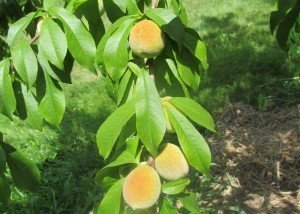 Above is one of 4 peach trees we have on our property. The tree is locate on the back of a berm that we constructed which holds overflow water from our rain tank and side yard. With little extra watering it has grown to this size in 3 years. It was a two year tree when we planted it. We had to knock off half of the peaches this year because there were just too many but we estimate there are still 300 on this one tree. The peaches should be ripe and ready to pick soon.
Above is one of 4 peach trees we have on our property. The tree is locate on the back of a berm that we constructed which holds overflow water from our rain tank and side yard. With little extra watering it has grown to this size in 3 years. It was a two year tree when we planted it. We had to knock off half of the peaches this year because there were just too many but we estimate there are still 300 on this one tree. The peaches should be ripe and ready to pick soon.
2 – Wild Plum
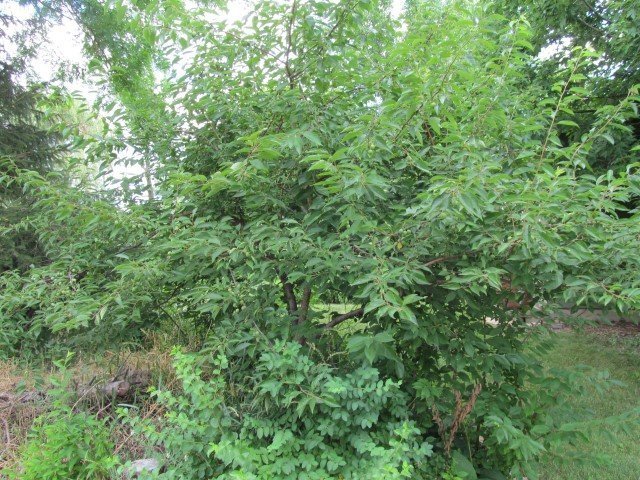
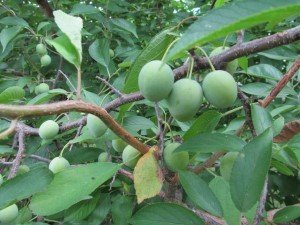 This little gem is actually growing in a what we like to call our “zone 5” part of the yard–an area we rarely touch. It was a volunteer that we were not able to identify so I almost removed it a couple of time. But Becky requested that we wait and see what it becomes which is something we do quite a bit.
This little gem is actually growing in a what we like to call our “zone 5” part of the yard–an area we rarely touch. It was a volunteer that we were not able to identify so I almost removed it a couple of time. But Becky requested that we wait and see what it becomes which is something we do quite a bit.
So we waited and last year we were the beneficiaries of about 150 small, wild, sweet little plumbs. They made several jars each of jam and juice. These are still young now but this year’s crop will be at least as plentiful.
3 – Grapes
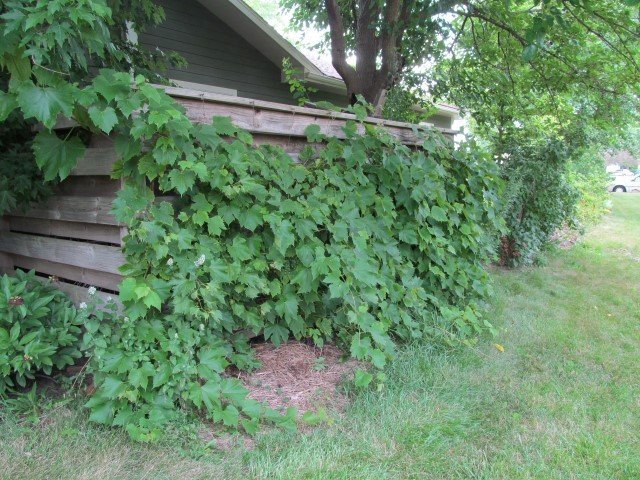
 It is the 4th year for these guys and they are filling in nicely. We purchased some inexpensive netting which we will put on soon because the birds and squirrels got the majority of the harvest last year.
It is the 4th year for these guys and they are filling in nicely. We purchased some inexpensive netting which we will put on soon because the birds and squirrels got the majority of the harvest last year.
This will be our largest harvest for sure as the grapes are developing in large bunches.
4- Gooseberries and Currents

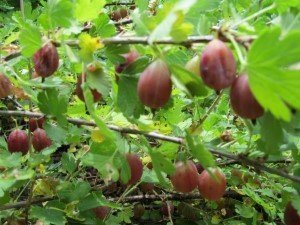 This is the berm we built with the soil we removed when we dug our rain gardens in the fall of 2007. These currents and gooseberries were planted the following year and have been growing steadily. There are about 4 varieties, some producing better than others.
This is the berm we built with the soil we removed when we dug our rain gardens in the fall of 2007. These currents and gooseberries were planted the following year and have been growing steadily. There are about 4 varieties, some producing better than others.
The biggest thing for me is that these shrubs are in light shade almost all day and they are still producing a good quantity of berries. Becky made our first gooseberry pie last week…!!!
5 – Daylillies and Jerusalem Artichoke

Not that these are a big part of our diet, but the daylily tubers, flower and even the stems in spring are delightful additions to salads and stir fry. The broad leafed plants are Jerusalem artichoke that produce a crop of tubers harvestable in the late fall to early spring.
6 – Raspberries
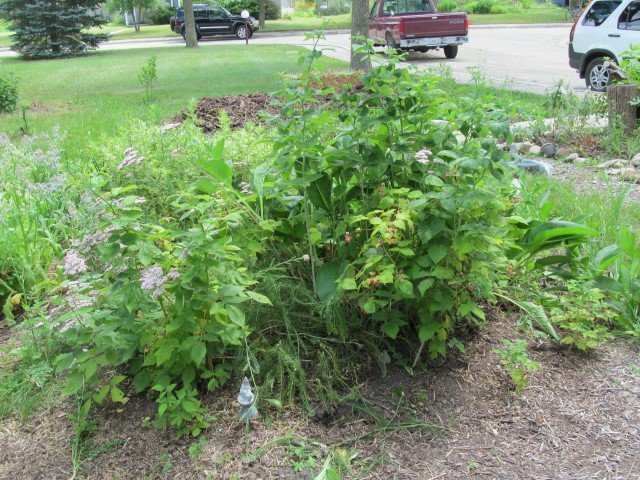
 This little patch of raspberries does not look like much but we have been snacking on berries every day for over two weeks and we have more to go.
This little patch of raspberries does not look like much but we have been snacking on berries every day for over two weeks and we have more to go.
What is significant is that the raspberry plants never did much in this location. Then last fall, Hayden (our son) and I buried some wood into this bed (it sits right next to raingarden #2) turning it into a small hugelkultur. This year, new raspberry canes are shooting out of the ground. Since they don’t bear fruit until the second year we can now expect an even larger harvest next summer.
7 – More Currents
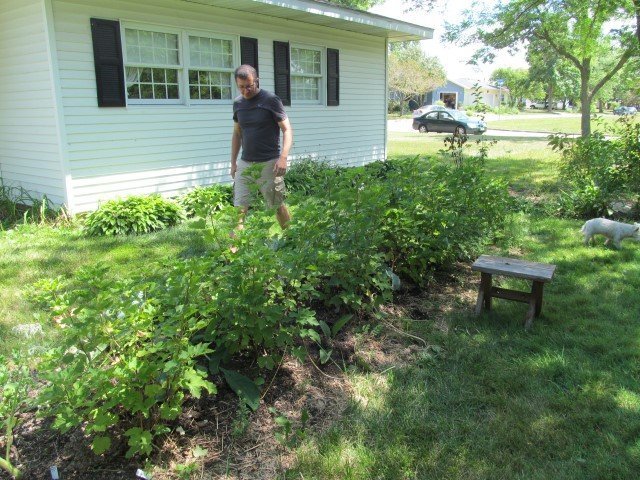
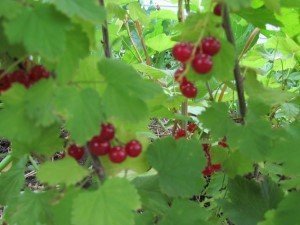 This is that low spot between our lot and our neighbors (my parents). It has been difficult to grow anything here since it is typically wet and soggy for two months every spring and then again after every heavy rain.
This is that low spot between our lot and our neighbors (my parents). It has been difficult to grow anything here since it is typically wet and soggy for two months every spring and then again after every heavy rain.
Realizing excess water is really a resource and not a problem, we turned the area into a hugelkultur mound (buried some-more wood) so now the wood soaks up lots of extra water and the plant roots (mostly theses currents) are up out of the soggy ground but now have access to extra water for weeks following each rain being stored in the logs.
We harvested so many currents from these bushes that Becky put up several quarts of current juice.
8 – Blackberries
 |
Again… this is a rather shady area of our house and we are so pleased that these plats are still able to produce some nice yields of berries. Interestingly, these blackberries sit right next to the area that we stack our firewood each season and all of the wood bark and litter in this area effectively keeps the ground mulched. |
9 – Horseradish

This beautiful plant sits atop of our largest hugelkultur mound. Becky harvested almost the entire root last fall (we used it all winter) but left a few minor roots behind. I guess they like growing here. God bless hugelkultur…!!!
10 – Collard Greens
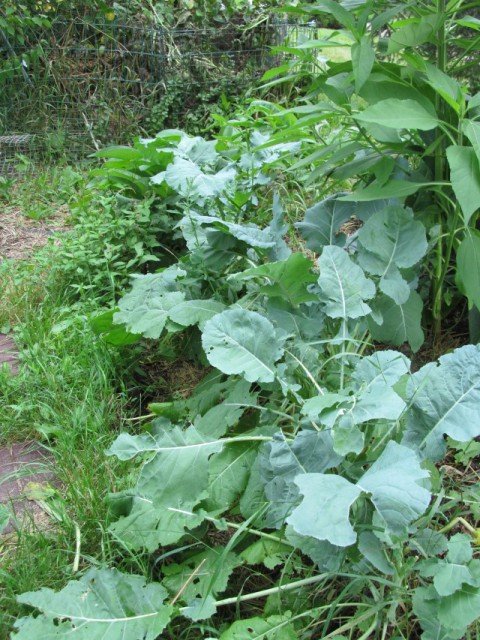
We planted collards in yet another hugelkultur bed three seasons ago and allow one or two plants to go to seed each season. We’ve never planted these greens again but we continue to receive bountiful yields each year. Let’s here it for volunteer plants!
Bottom Line…
Toby Hemenway, in his permaculture book Gaia’s Garden (which we highly recommend by the way), has a chapter called “Pop goes the Garden”. In it he explains that with the annual attention to garden soil and the addition of compost, mulches and other organic matter, there comes a time when things just start to really gel and one’s garden starts to produce almost effortlessly…at least compared to the early years of developing the soil.
We still have a way to go before we will likely feel that the soils all around our house are at their peak, but for now, it has become obvious that something is going right in our gardens as the work continues to decrease and our yields continue to grow.
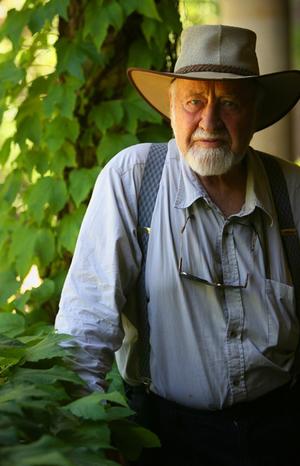
In the words of Bill Mollison, you will know you are doing permaculture when:
We are working with nature, not against her… and leaving our small piece of the planet in better condition than when we found it.
Join us for one of our July PDC courses some year and enjoy these raspberries with us. They are incredible!
I hope you are having a great summer….. Bill Wilson